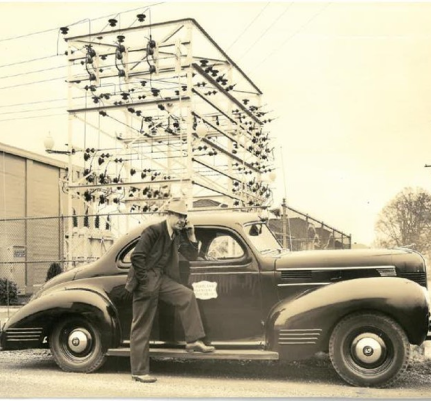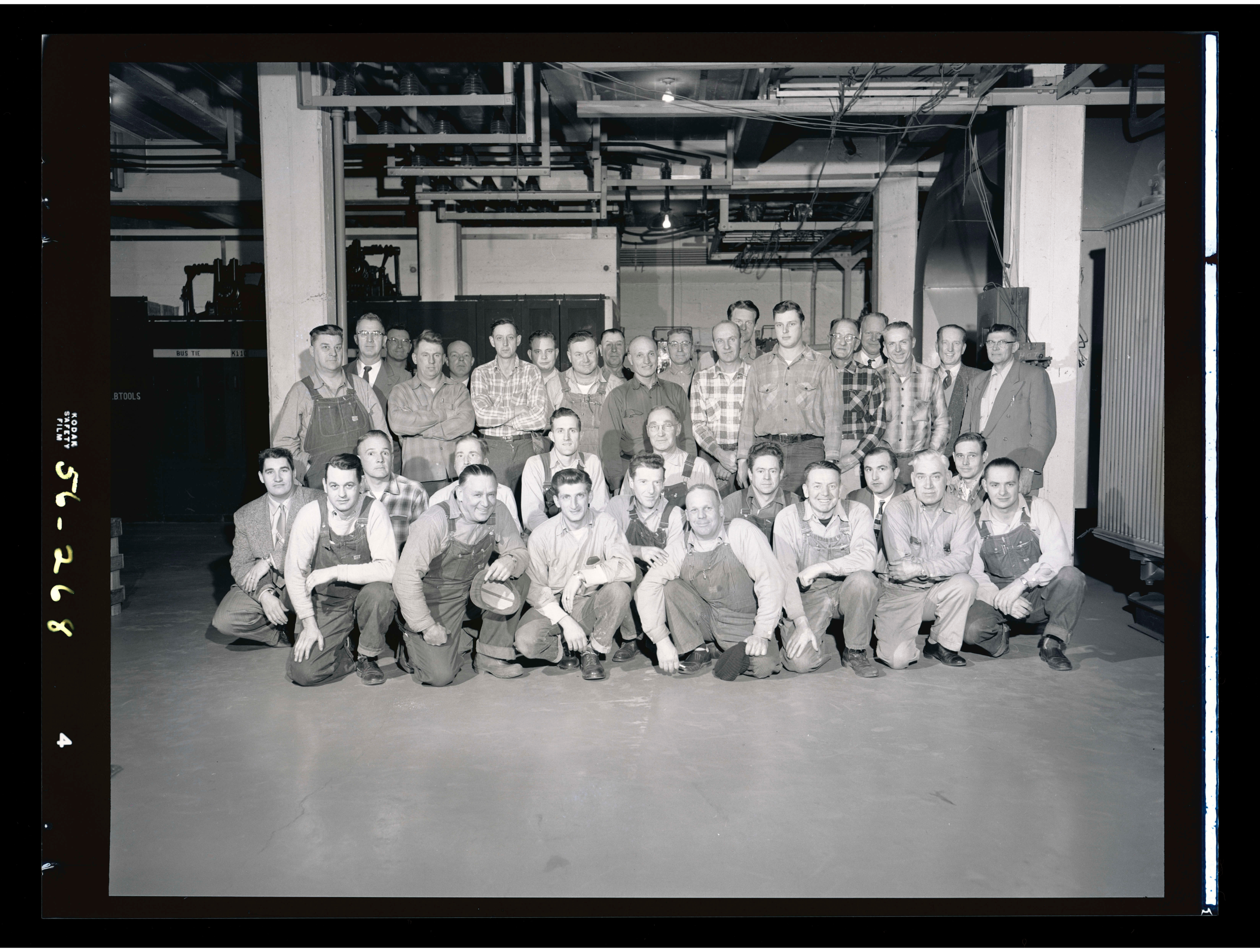Distribution Technology
1940s - 1980s







Distribution Technology
The need for more electricity was driven by the adoption of electric appliances in the home during this era. While PGE was marketing the benefits of electricity to all customers, this meant that the company needed to develop more efficient distribution methods of getting power to neighborhoods and keeping it reliable year around.



1940:
PGE became the first utility in the nation to have two-way radios in line vehicles for more efficient dispatching.


1955:
PGE created the first residential underground wiring system in the nation, installing it in the Humphrey Park development in Portland’s West Hills.
1956 PGE Underground Crew

1975:
Artist Rendering of proposed Salem Substation.

The plant is named after the city of Boardman, which itself was named in honor of Samuel H. Boardman, who founded the city of Boardman in 1903. Carty Reservoir, the water storage and cooling pond, was named for James Carty, one of the early pioneers of the area who envisioned pumping water from the Columbia River to irrigate the semi-arid land.







Boardman Coal Power Plant
Boardman Coal Power Plant
1980 - 2020


1930:
PEPCO changed name to Pacific Northwest Public Service Company and PGE is resurrected as the name of the electric subsidiary.
1955:
PGE created the first residential underground wiring system in the nation, installing it in the Humphrey Park development in Portland’s West Hills.
1975:
Artist Rendering of proposed Salem Substation.


1980 artist's sketch of PGE's proposed coal-fired power plant near Boardman




History of PGE
Electrifying Oregon
Powering Progress
A Thoughtful Transition
History of PGE
Electrifying Oregon
Powering Progress
A Thoughtful Transition

History of PGE
Electrifying Oregon
Powering Progress
A Thoughtful Transition



Forever Evolving
Powering the Future


A Thoughtful Transition

Clackamas Project Expansion
Building Reliable Power Plants

Powering Progress
Willamette Falls
Clackamas River Construction


Electrifying Oregon

History of PGE
